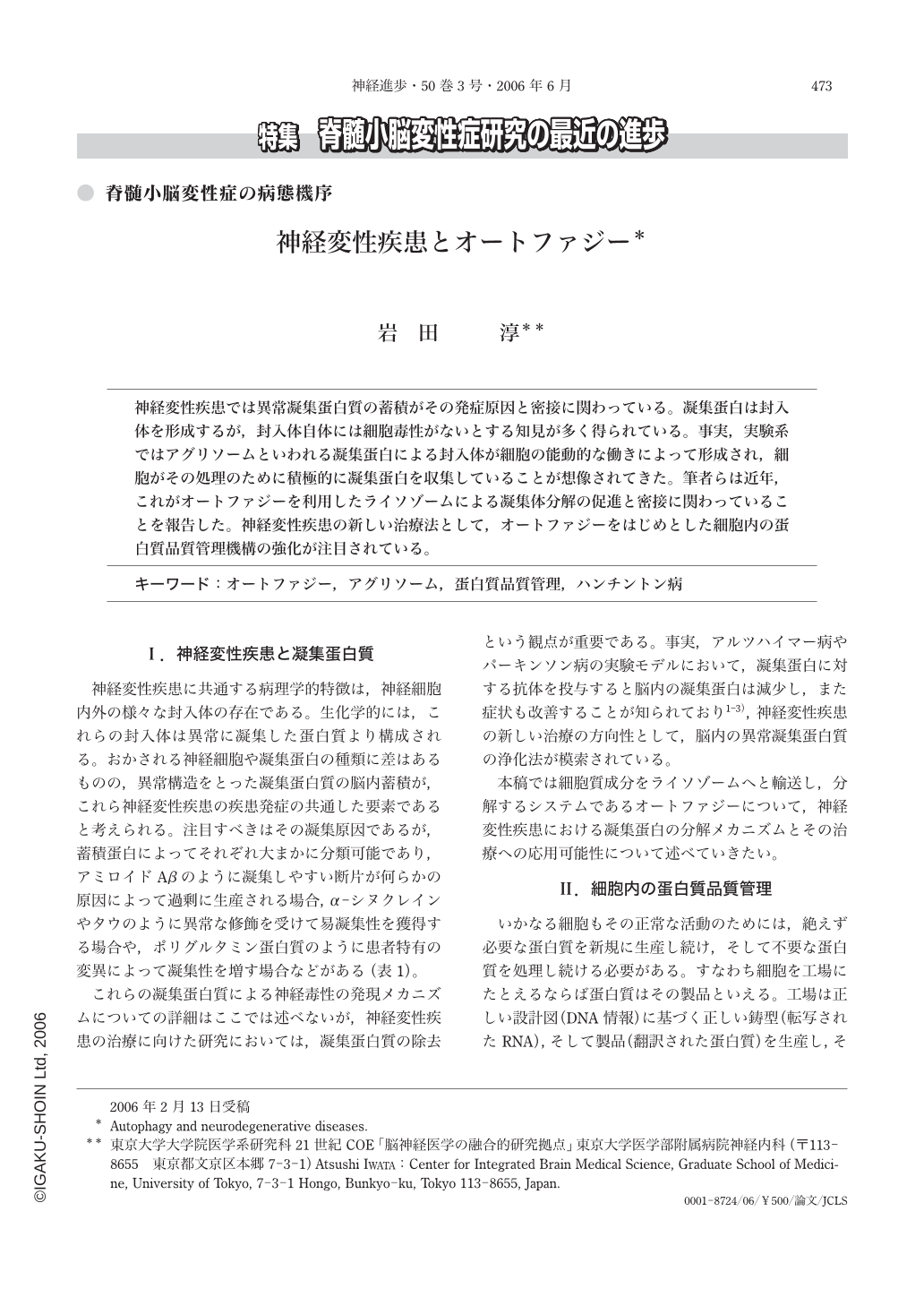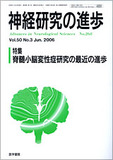Japanese
English
- 有料閲覧
- Abstract 文献概要
- 1ページ目 Look Inside
- 参考文献 Reference
神経変性疾患では異常凝集蛋白質の蓄積がその発症原因と密接に関わっている。凝集蛋白は封入体を形成するが,封入体自体には細胞毒性がないとする知見が多く得られている。事実,実験系ではアグリソームといわれる凝集蛋白による封入体が細胞の能動的な働きによって形成され,細胞がその処理のために積極的に凝集蛋白を収集していることが想像されてきた。筆者らは近年,これがオートファジーを利用したライソゾームによる凝集体分解の促進と密接に関わっていることを報告した。神経変性疾患の新しい治療法として,オートファジーをはじめとした細胞内の蛋白質品質管理機構の強化が注目されている。
In neurodegenerative diseases, accumulation of aggregated proteins leads to inclusion body formation which is the hallmark of the pathological findings. Formation of inclusion bodies is now thought to be a cellular protective mechanism to collect aggregated proteins to a small compartment in the cell since more oligomeric form of aggregated proteins seem to have more toxicity than highly polymeric aggregates which are present in the inclusion bodies. The experimental inclusion body called aggresome is formed at microtubule organizing center by the help of microtubules and motor protein complex upon proteasome inhibition. Recently, the author reported that the collection of aggregated proteins to aggresome is closely related to their degradation by autophagy-lysosomal degradation system which strongly suggested that autophagy is a back-up system for ubiquitin proteasomal protein degradation system. Thus to find ways to upregulate protein degradation system including ubiquitin proteasome system and autophagy for therapeutic point of view is a quite promising strategy.

Copyright © 2006, Igaku-Shoin Ltd. All rights reserved.


